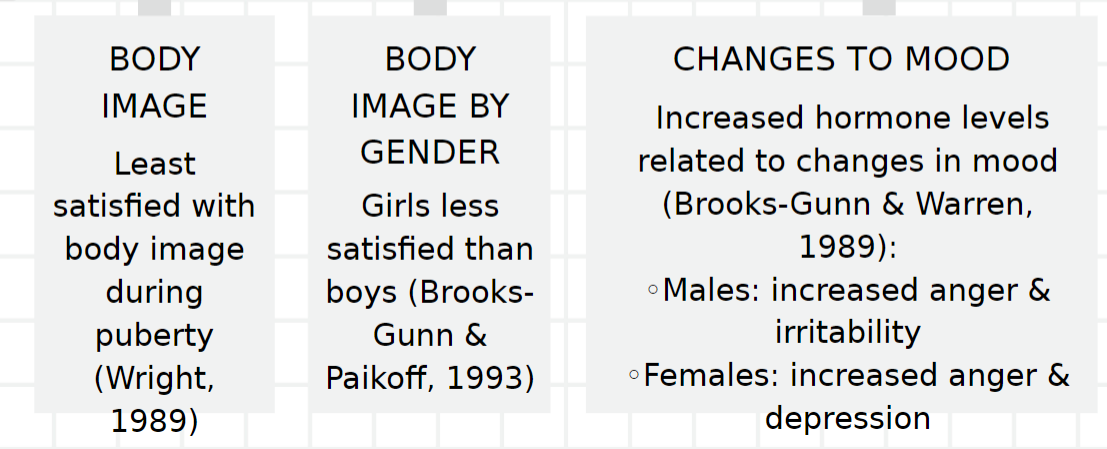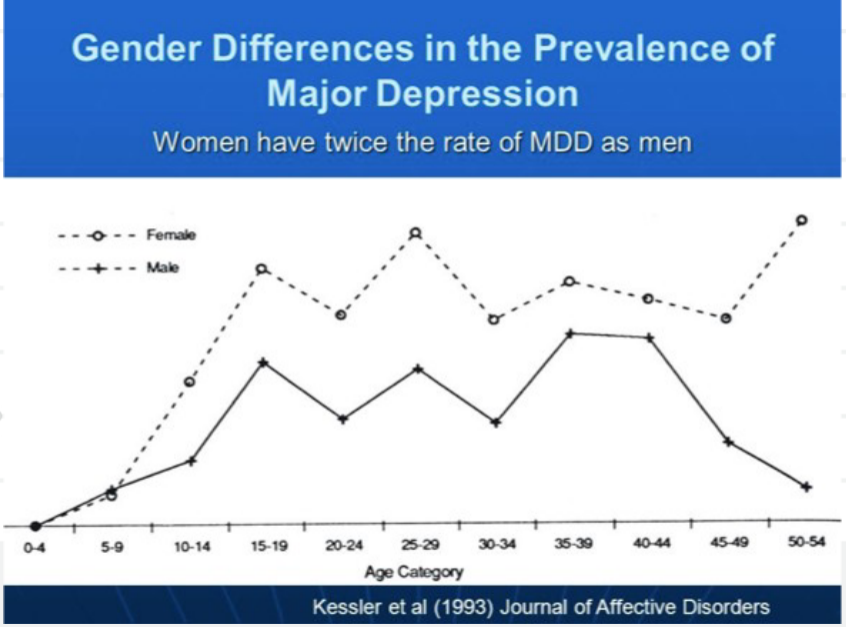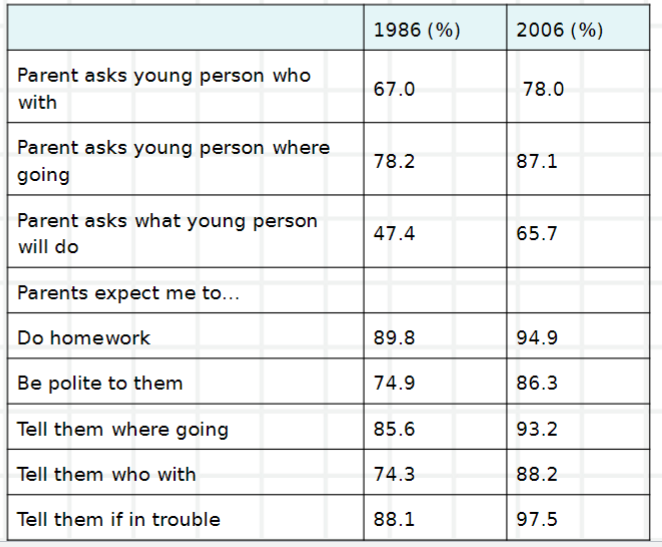adolescence 1
1/20
There's no tags or description
Looks like no tags are added yet.
Name | Mastery | Learn | Test | Matching | Spaced |
|---|
No study sessions yet.
21 Terms
what is adolescence?
‘growing up’ period between childhood and maturity (approx. ages 10-19)
what are the major tasks of adolescence?
adjust to changing body size and shape
come to terms with sexuality
adjust to new ways of thinking
strive for emotional maturity and economic independence of adulthood
why has the age that puberty starts declined over time?
increased standard of living (particularly nutrition, health, heredity, body mass)
key characteristics of puberty
7 year range for the onset of puberty (full process lasts about 4 years)
begins 2-3 years earlier for girls
average growth spurt of 10 inches and 40 lbs
marked changes in hormone levels (testosterone and estradiol)
what is estradiol/oestradiol?
one of three oestrogen hormones naturally produced in the body (involved in menstruation)
psychological aspects of puberty?
body image
body image by gender
changes to mood

what are the hypotheses for pubertal timing?
stressful change hypothesis
off time hypothesis
early-timing hypothesis
describe the stressful change hypothesis (Simmons & Blyth)
the intrinsic stress of pubertal change will cause distress during the period of most rapid change
describe the off time hypothesis (e.g. Livson & Peskin)
events encountered earlier or later than expected will cause additional stress
describe the early-timing hypothesis (Stattin & Magnusson)
early maturation may cause inappropriate maturity demands from others, causing distress
describe Caspi & Moffitt’s (1991) study
set out to test the 3 rival theories in the prediction of behavioural problems from age at menarche
only tested girls
results showed evidence for early timing hypothesis

pubertal timing in boys
like maturing early - gain in self-esteem (Alsaker, 1992)
more popular, likely to be leaders, good-natured, may hold a conitive advantage but more cautious, bound by rules and routines (Gross and Duke, 1980)
late maturers are more dependent, insecure, aggressive etc.
pubertal timing in girls
dislike maturing early
tend to have poor body image, lower self-esteem, more likely to engage in risky behaviours and reach lower levels of educational attainment (Stattin &
Magnusson, 1990; Petersen,1993)
gender differences in the prevalence of major depression
women have twice the rate of MDD as men
differences emerge clearly during puberty
from age 9, rates of depression goes up dramatically for girls

describe Lewis et al.’s (2018) study
girls and boys were measured on depression and puberal stages at ages 14.5 and 17.5
girls - for each increase in tanner breast stage MFQ score increased by 1.4 points (regardless of pubertal timing); no relationship with pubic hair
boys - no relationship between depression and pubic hair
what are the theories for how independence occurs in adolescence?
adolescents individuate from their parents (Freud, 1946), becoming more emotionally and behaviourally independent (Steinberg & Silverberg)
the parent-child relationship changes over adolescence leading to psychological independence with continued connectedness (Youniss & Smollar, 1985; Grotevant & Cooper, 1986)
results of the study by Larson et al. (1996)
older adolescents spent less than half time with family than youngest adolescents but time alone time with parents did not decrease
no correlation between time spent with family members and quality of family relationships
mediators of the decline in family time were external to the family system
describe results of Gardner et al. (2012)
parents nowadays (2006 vs 1986) monitor their adolescents closely
more parents have high expectations of their children’s behaviour

describe the results of Waite et al.’s (2014) review paper
consistent evidence for an association between anxiety and perceived parental control and anxious rearing in adolescence
less consistent evidence for association between adolescent anxiety and perceived rejection and lack of warmth
results of Chapman et al.’s (2016) review paper
evidence for correlation between low parental positivity and reduced adolescent autonomy
describe the results of Xu et al.’s (2019) study
investigated socioeconomic status in Chinese sample
the lower the the family SES, the less maternal care was displayed to their children and the higher the level of adolescent reported depressive symptoms